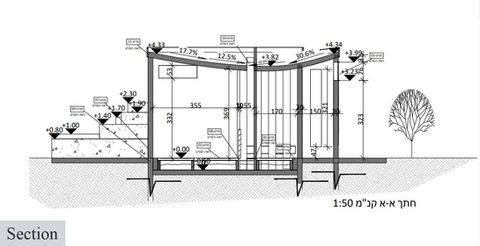Create Your First Project
Start adding your projects to your portfolio. Click on "Manage Projects" to get started
Technology
Program The building is inspired by the works of Mondrian, whose artworks are abstract and based on primary colors. Our structure is built around a water-movement system. We enter on an outdoor platform, and as we proceed inside, the distribution of light reflects the inspiration drawn from the artwork—gradually dimming as we go deeper into the building, to preserve the art pieces. Along the path, we begin to see fewer solid walls and more glass ones; we walk on a glass floor above the water. Continuing along the route, we reach a greenhouse space and a fish pool, where the roof is open to allow rainwater to connect with the pool. These two spaces cannot be physically touched but only observed. At the end of the building, we arrive at an amphitheater with seating and restrooms for visitors; next to it, there is a sitting area composed of cubes in Mondrian’s colors and various sizes. The path is designed so that as we move forward, we continue discovering new elements rather than returning to ones we have already seen.
Site Location
I chose to place the building at a point that serves as a meeting spot between several stations within the university. It is located near the Beit Midrash area, a place where many students gather to sit, talk, or relax—whether in groups or individually—and it faces the central library, which attracts students from all disciplines. This spot naturally becomes a point of encounter between students coming from the School of Architecture, Mexico Building, or the Faculty of Management, as well as those arriving from the direction of Oranim, the Faculty of Medicine, or the synagogue. The form of the building is inspired by Mondrian’s compositions, and the ground itself follows a grid structure made up of square units.
Relation of the Building to the Existing Sculpture
The building does not hide the sculpture or destroy it because of its presence. Instead of covering or overpowering it, the structure becomes an integral part of the existing facades and the surrounding environment. Rather than competing with the artwork, the building is designed to complement it — maintaining a dialogue between the old and the new, and between architecture and art.
The building includes several main spaces.
Movement takes place mostly on an outdoor floor and partly on a glass floor above the water.
A space for viewing the artwork.
A greenhouse space.
A fish pond area.
Restroom facilities.
A seating area with sculptural elements in the main hall of the building.























